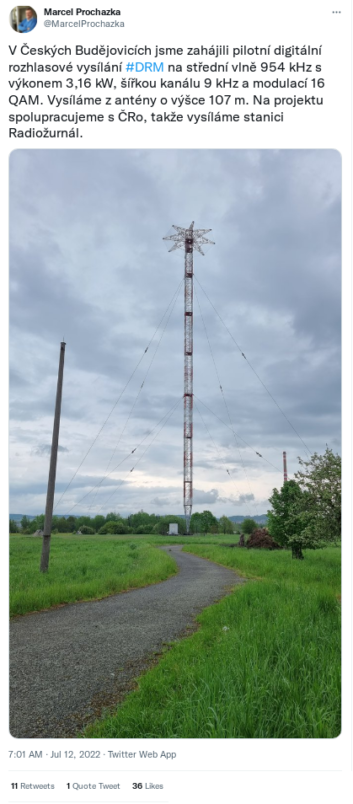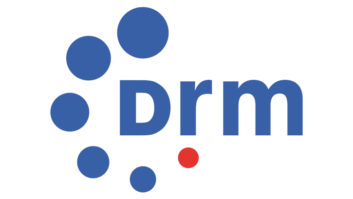
Czech transmission services company České Radiokomunikace (CRA) is testing the DRM medium-wave digital radio system on 954 kHz.
According to a tweet from Marcel Prochazka, director of legal and regulatory affairs for CRA, the transmissions are originating from České Budějovice in South Bohemia and operating at a power of 3.16 kW from a 107-meter HAAT antenna.
CRA stated in a Czech-language press release that the test is designed to verify the possibility of using its existing analog transmitters for digital radio broadcasting. It hopes to verify various modulation parameters along with day and night coverage, usable network capacity and immunity to interference.
CRA Spokesperson Anna Tůmová said the primary goal of the test is “to verify the compatibility of our existing AM mid-wave transmitters with DRM. We will evaluate the test results in 2023.”
[Related: “Australia Demonstrates DRM on AM, FM”]
Although the DRM Consortium is not involved in the Czech trial, Ruxandra Obreja, chair of the consortium, welcomed it. “We are very pleased to see this new digital medium-wave test in the Czech Republic and its thoroughness … We are confident that this test will confirm the good DRM performance as recorded daily in India on their 35 plus transmitters and elsewhere.”
Obreja also noted the potential value of upgrading CRA’s analog equipment to support digital radio. “The fact that the analog transmitter used in České Budějovice can be upgraded to DRM is a bonus and will give confidence to those who want to go digital for wider coverage without replacing everything and investing vast sums of money, especially in the current climate. … We are looking forward to the Czech test results due out in 2023.”
Public-service broadcaster Český Rozhlas is cooperating with CRA in the tests, which are broadcasting ČRo’s news station Radiožurnál. ČRo has steadily decreased its use of AM broadcasting in recent years in favor of FM and DAB+.
Although CRA does not have current plans for ongoing DRM transmissions, Tůmová said “We are discussing further use of DRM with potential customers.”







